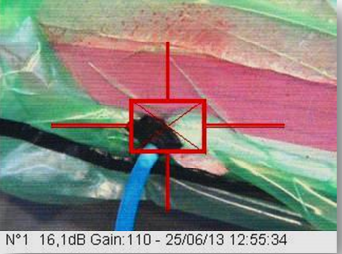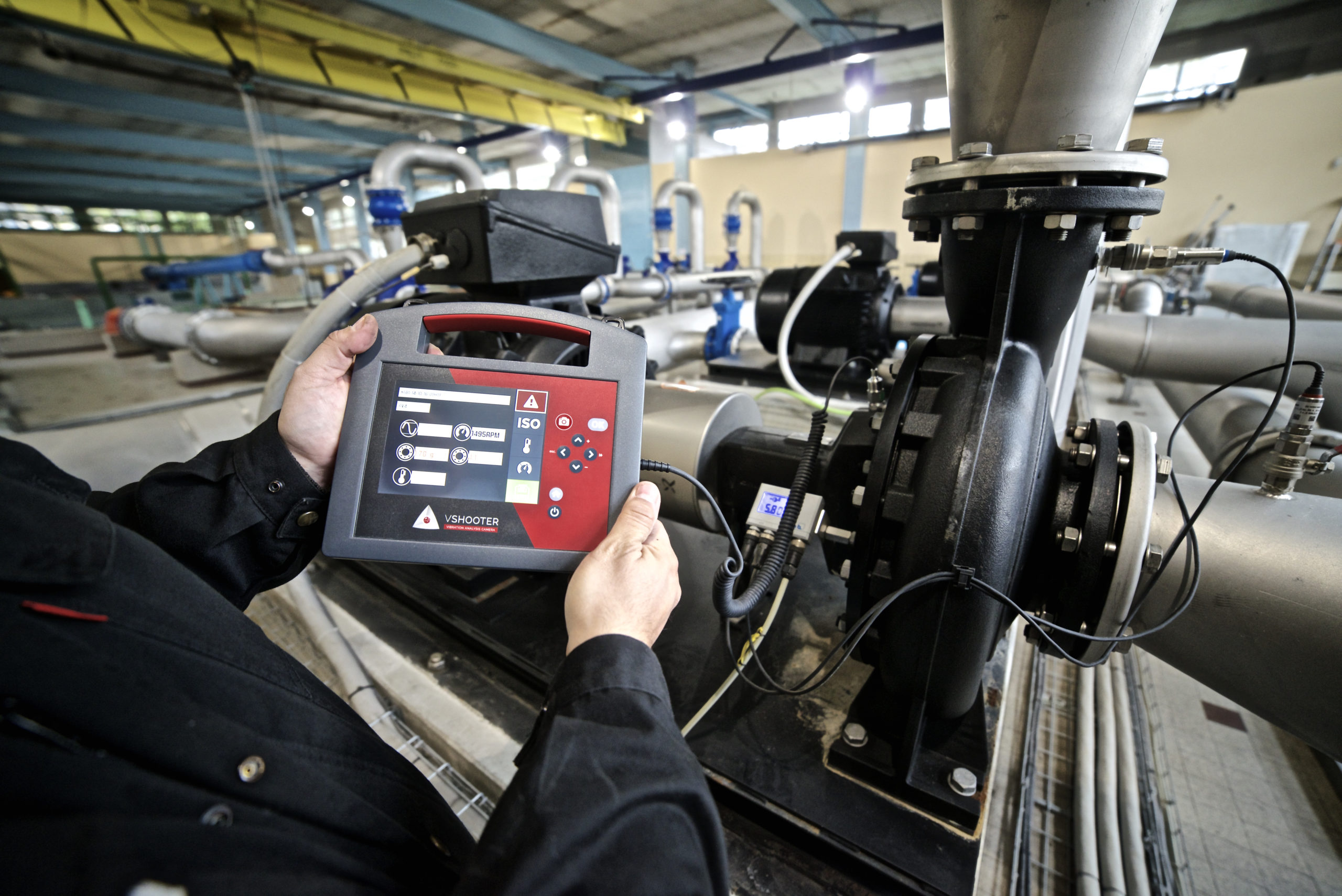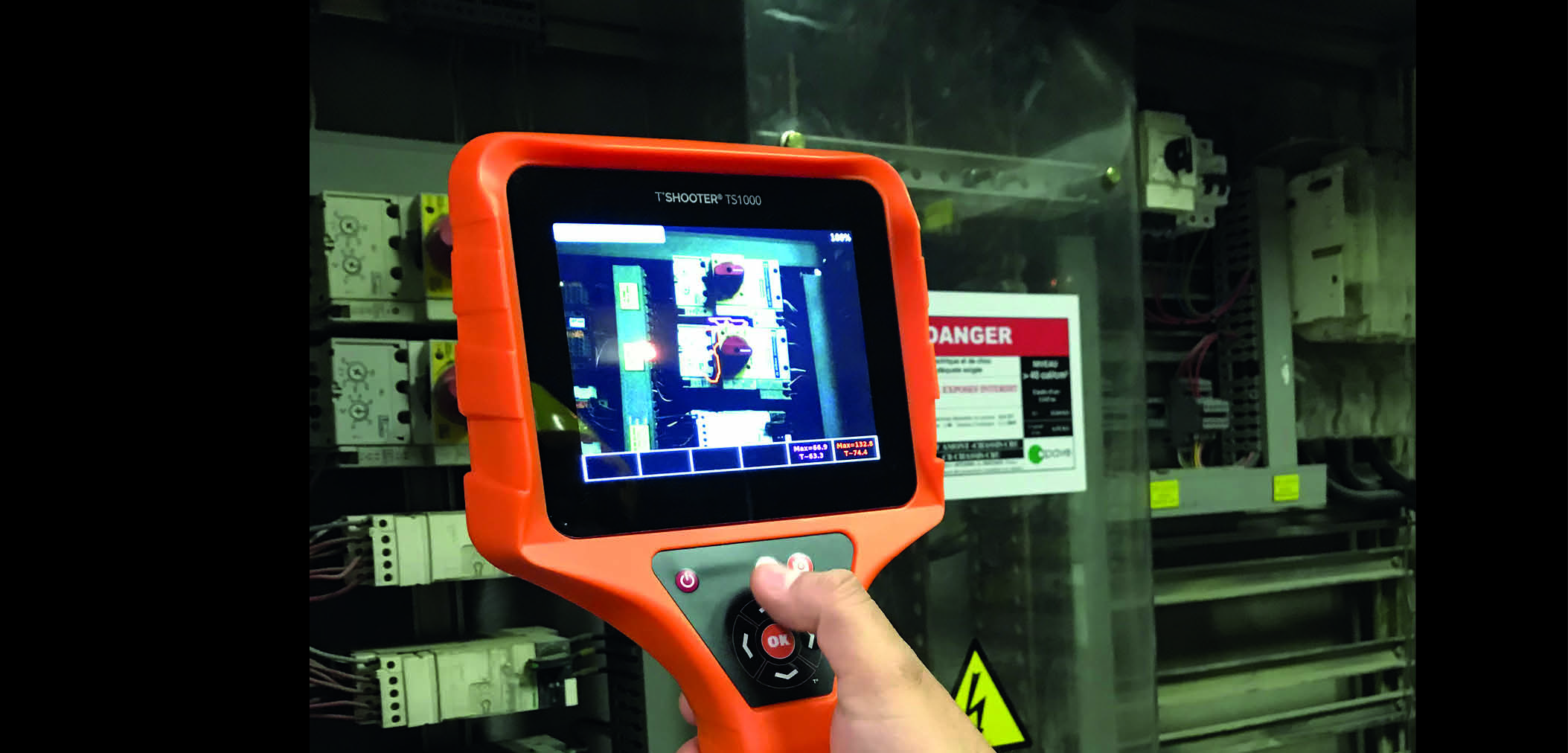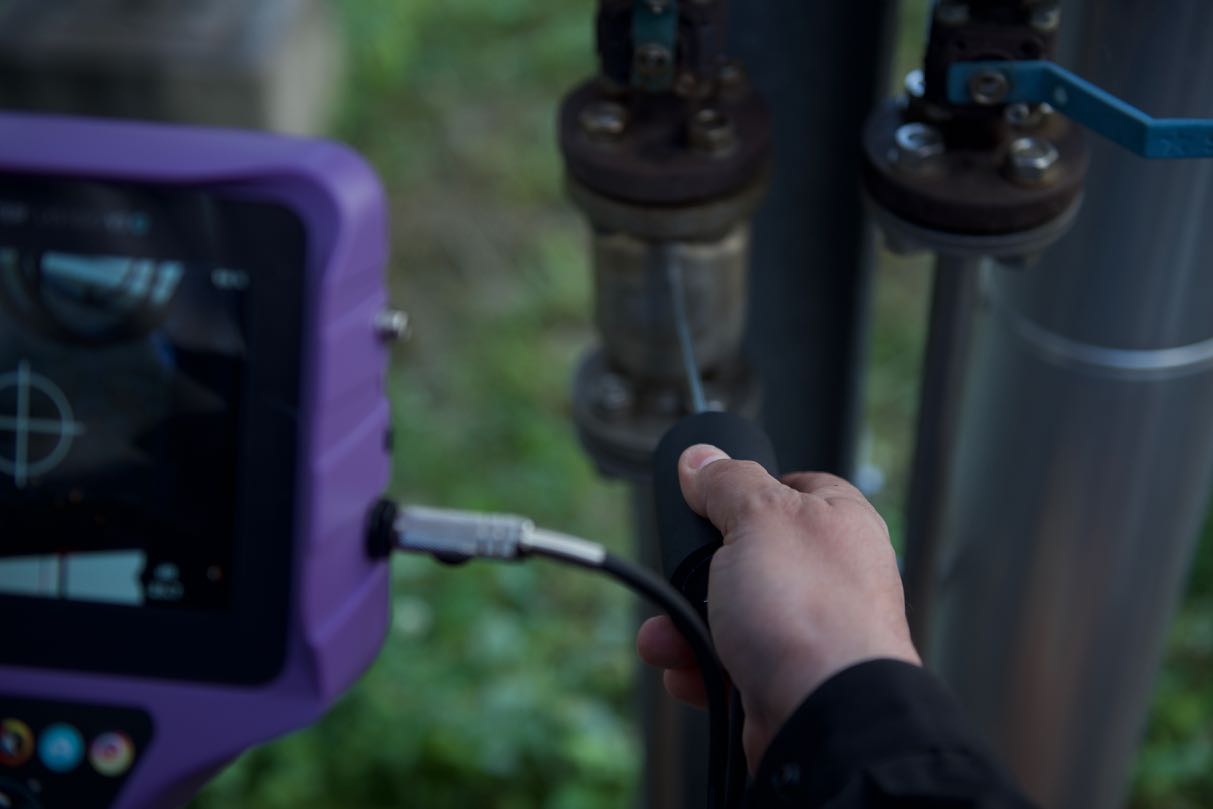Looking for vacuum leaks in infusion process used in :
- Construction of composite parts for aerospace industry
- Construction of composite boats hulls
- Construction of composite wind turbine blades and other composite parts.

Example of a loading piece infusion with resin injection
Problem encountered with vacuum infusion (also named SCRIMP method)
Vacuum infusion method consists to inject resin in a closed structure composed of an open mold, topped with a hermetic cover which contains glass fiber or other and all together connected to a vacuum installation.
Before infusing the fiber with resin, firstly we have to be sure everything under vacuum pressure (almost between -0.5 et -0.9 Bar) is leak tight.

Technical detail of a vacuum infusion
If there are leaks in the plastic cover, then the resin dispersion will not be uniform in the glass fiber which will result in imperfections in the finished product.
If there are leaks on or around the inlet connector resin injection, there will be resin loss, efficiency loss in the infusion process, so time loss, production loss and ultimately a reduction of profit.
Vacuum leak detection solution
With the LEAKSHOOTER LKS1000, equipped with combined vision/ultrasonic detection technology with standard cone use, it is possible to easily detect these leaks by scanning the upper zone sheeting, the holding seals, the inlet connector… around 1 m away.
Then, when the zone leak is identified with the cone, it is possible to approach it and connect the flexible probe to finely check the leak and carry out necessary repairs.
This whole procedure can be realized with or without the headphone, thanks to the automatic and dynamic target on screen during leak detection (see below).


 Ultrasonic inspection
Ultrasonic inspection  Temperature inspection
Temperature inspection  Vibration analysis
Vibration analysis  Temperature inspection
Temperature inspection  Steam traps monitoring
Steam traps monitoring